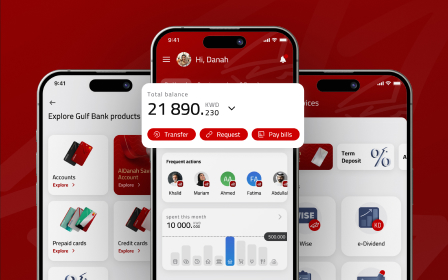A practical guide to building a brand strategy

- Purpose of the brand
- Brand recognition
- Components of a successful brand
- Stages of building a holistic brand
- Strategic sessions
- Business model and market
- Persona and value proposition
- Brand archetypes
- Market and user research
- Remote research
- Representative research
- Research goals
- Building a brand strategy
TL;DR: For a product to be noticeable, it is not enough anymore for a brand to be simply good. To gain success one needs a pretty package and good advertising, at the very least. But what is at the core of it all? There is certainly a robust strategy that is grounded in research. This stage may not be easy, but it is careless to build a structure without a solid foundation. We know and practice a set of tools for creating a successful brand at Qubstudio. Here we want to share our process with you.
This article is written for those who want to dive deeper into the process of creating a brand strategy and it’s value for business. Here we share our experience of helping clients building a holistic brand. There is a surprise at the end of this paper.
Purpose of the brand
We live in a world that is powered by brands. Brand behave like humans — they are full of personalities and are responsive to communication with other people. Some of the brands turn into religions, while their chiefs become worldwide idols. Users are ready to align themselves with such brands — promote them for free and spend as much as possible on beloved products. Every one of these promoters bring at least one new client, according to the NPS index.
A brand itself, as a standalone unit has its own value. A lot of times this unit has a higher price than the value of business’ materialistic units, as we learn from
Coca-Cola and Apple. Without a clear understanding of brand processes, we perceive brand success as luck or magic. In reality, these companies evolve according to a clear algorithm of specific identified actions. Research and brand strategy are key elements of this algorithm.
A business needs to invest time and resources in order to build a powerful brand.
As a result, the company will soon strengthen itself even in an unstable market, while the brand will move to generate profit.
Naturally, a brand is not the only factor in business success. A good product with clear rational benefits is also important. However, a brand system significantly increases the chances for success.

Brand recognition
The majority of business goals focus on increasing brand recognition. We are talking about the brand equity, represented by a pyramid. It illustrates stages of relationships between a customer and a product.

At the first stage, the customer has to be aware of brand existence and product benefits. It is usual for companies to use customer activities and target advertising. Usually these product promotions channel on multiple platforms that are familiar to the target audience.
The relationship continues even after the first stage, because the user is now also considering the given product as a possible solution to his/her needs. We use an interesting approach to understanding user-product relationship — Job to be done. According to this method, a person hires a product to complete a certain task. For example, a hungry person is thinking about a lot of foods at the same time: banana, yogurt, Snickers bar. Every option is potentially a solution. It is important that your brand is added to such a list of possible solutions.

In the third stage, your product has to become customer’s top choice. User experience and rational characteristics are the most important factors that identify if the brand can level up to the next phase. There is a good chance the user will make more purchases if the first user experience was a positive one.
Loyalty stage is possible for products whose brand is relatable and communicative. The brand starts working for a business when it gains a pool of loyal customers, and not the other way around. The most important at this stage is to keep the brand image and react wisely on market competition.
In order for a business to plan and establish goals, one needs to first identify the current position on the brand equity pyramid.
Components of a successful brand
A lot of businesses nowadays realize the importance of brand evolution. Those who have tried to do it themselves soon realize that most marketing resources do not bring the expected conversion. It is impossible to foresee all typical mistakes. Therefore we underline the importance of a systematic approach to building a brand.
Brand strategy, communication strategy, and visual identity are the three main elements of effective, rational, and flexible brand evolution. There is a joke that a good brand is like a woodpecker who always hits the same spot.

Spoiler: if customers fail to emotionally connect with the brand, it may mean that the business does not actually have one. Instead, it may simply be a trademark that conducts its primary functions but does not help reach any business goals. A brand should not become an ephemeral face of the business, but a specific character who speaks one language with customers.
Stages of building a holistic brand
Branding and rebranding processes require a unique individual approach. There is no one-fits-all formula. Businesses are located at different stages of the brand equity pyramid, operate diverse markets and are focused on various goals.
However, there are common stages in brand development regardless of the individual business differences. Every step can be self-standing in practice, but we at Qubstudio have united them into a single system.

In this article, we take a closer look at the first three stages, as these aim to build the core and generate a direction for the overall strategy.
Strategic sessions
The biggest illusion a client can hold is to expect a great brand to be created by an agency without involving key brand professionals. Certainly, the creative team physically executes 90% of the job. But, an effective brand is not possible without the remaining 10% contribution by the business representative team.
This is why holding strategic sessions is the primary stage of any project. There are two main reasons they are responsible for. First is team introduction to the product, and second — brainstorming an actual brand and business strategy.
It is common for a company to lose focus of its mission in the routine. Strategic sessions help employees regain that focus by participating in strategic, not tactical tasks. At the same time, this process helps the creative team understand the grounds on which the brand is being built on.
We become a unified team with a common goal — to find answers to the four main questions:
- Who we are?
- Who is our user/consumer?
- What do we deliver?
- What is our relationship like?
To answer these, we conduct from two to four strategic sessions.

Business model and market
The creative team starts the project without any knowledge of the product. We start from the beginning — talk about the business. We visit the office or production site, meet the employees, and sometimes, relocate our team to work onsite with the client.
At this stage, it is important to understand the business field and internal operational structures of the business. It is needed to communicate project goals, research competitors and idols. The business model canvas helps us stay productive in this process. We fill it in as much as possible together and use it as a blueprint.

Persona and value proposition
At the second brand session, we switch our attention completely from company to customer. We create a customer portrait and outline the personality in detail: looks, interests, communications style, etc.
Starting from this point an imaginary customer is transformed into an actual person. For example, we imagined a real Vasyl, who lives in a two-bedroom apartment in Lviv and loves colorful socks. If we are faced with a task to create a brand for socks, we have to understand the role socks play in Vasyl’s life. Why does he love colorful socks? Does he envision himself creating the coolest sock collection, or is he going against the grain of corporate culture?
We segment a target audience and formulate jobs-to-be-done stories for each. We use the next formula: when (situation description), I want (motivation), thing (result). I may face a challenge (barrier). I may be convinced (wow-effect).
In addition, we complete a value proposition canvas that helps us imagine the product in the context of the real-life of a real person we described.

Brand archetypes
An archetype transforms a trademark into a brand and makes it alive by mixing in real character traits. Carl Jung was the first to identify the role of archetypes in the collective unconscious. This theory soon enough has become a much simpler marketing tool. There are 12 main archetypes that are located on the four-axis of chaos and order, individualism and collectivism.

During this strategic session, we are working with an imaginary character that represents the brand on the market. We imagined a man similar to Justin Trudo as a character for Socks manufacture visual identity 🙂
A preliminary draft of brand positioning can only be formulated at the last strategic session. The materials we have gathered up until this point are extremely valuable but serve only as blueprints for building an effective brand.
Market and user research
Imagine a typical creative team. Now add two strategists into the mix of designers, art director, and project manager. This is how a creative team looks like at Qubstudio. One brand strategist is responsible for the rational segment and future brand strategy. The job of another revolves around communication — from naming to niche tactile tasks. At this stage, they diverge.

Remote research
We start by conducting remote research. This lets us identify the level of objectivity our team holds and make sure we are not influenced by a marketing phenomenon. This notion is dangerous, as the team may stop assessing the product objectively.
We collect all brand information from open sources, like customer reviews. Also, we research communication channels of our brand, as well as it’s competitors. We create a SWOT and a communication analysis of competitors. Both tools allow us to understand an objective picture of the market.

A special attention is given to world trend analysis. Here we use a trend application canvas to estimate an opportunity to use them for the project.

Representative research
Eventually, we move towards representative research that is usually both quantitive and qualitative. For conducting this research we generate a Smart-goal which we achieve by interviewing a select group of users.
Qualitative research is managed by holding extensive interview sessions with a corresponding focus group. Quantitative research is run by remotely interviewing two groups — the existing customer base and potential users. We generate a questionnaire plan and/or interview, and together with a client team conduct focus group interviews. At the end of the process, we collect, analyze and present the results.
Research goals
The main goal of any research is a search and validation of insights about users and products. Eventually, the results can be translated into a creative platform.
Insight is about a story. It is an objective truth about the world that everyone knows about, but it has not been used as a marketing tool yet. Anything could be an insight — from a spot-on meme to a known fact. Example — people often recommend books that they haven’t finished reading.
A creative platform is a main tool used in crafting a visual and communication identity.
Learn more about insights and creative platforms in our material on communication strategy. Here we will give a short example. Most of the time people visit a pizzeria in order to celebrate something. This is an insight. In short, “Celentano is a small celebration” becomes a creative platform that is built on this insight.
Usually, enough information is generated during the first two steps. We can now use it to generate a strategy, brand identity, and creative assets.
Building a brand strategy
At Qubstudio, we organize a brand strategy in a document that consists of the following brand qualifications:
- Values
- Vision
- Mission
- Differentiation
- Positioning
- Positioning matrix
- Types of similar brand positioning in other industries
- Brand enemy
- Archetype
- Consumer person and JTBD stories
- Typical pattern of brand strategy
- Positioning elements to stay away from
- Creative platform
The main elements of the strategy are values, vision, mission, positioning and brand differentiator. The remaining qualifications generate a full picture for future strategic growth.
Brand values. They are the values the brand stand for. In the modern world, these become the most important characteristics by which customers validate brands. In the past, it was enough for a company to be positioned in the right sector, but now it also has to stand for something important. A task of buying a product is also a customer’s act of activism in support of a specific personal value. Brand values add on and accelerate brand positioning, but require constant evidence in a variety of forms.
A correct execution of brand values can be seen done by a British brand of natural cosmetics Lush. The business was able to build an international corporation with a great profit without spending a penny on external marketing — all thanks to the active brand value structure.
Positioning. Positioning is another significant part of the brand as it is responsible for brand associations. Every human builds associations with brands. In other words, people classify brands by specific groups in their minds. For example, Mercedes — a luxury car, BMW — a cool car, Volvo — a safe car, Leaf — an electric car, Tesla — a cool electric car. A great positioning is when there is only one product associated with a group. By the way, a “great quality product” association does not apply here.
Differentiation. A brand needs to be differentiated from its competitors. In order to identify what this uniqueness is, we conduct a SWOT-analysis of competitors and channels of their user interactions. This is done during the previous stage.
Vision. Vision is a representation of what a brand wants to introduce or change in the world.
For example, Celentano’s vision is to live in a world where every day brings a reason to celebrate. Working in tandem, the brand’s mission demonstrates how the vision can be implemented. Celentano’s mission is to create an atmosphere of celebration in every store location. This way, even a casual visit can become special.
Despite the fact that we commonly use this formula for brand strategy, there is no universal solution for every business. We can dedicate a whole book to a cool and effective brand strategy, but we can sketch it on a napkin as well. The format doesn’t matter.
In general, a brand strategy is the main concept of the brand that is scaled for brand development. It should always be based on research, clearly formulated and able to translate into a single sentence — the brand core.
In addition, it should also contain a tactile realization plan. That is because even the most elaborate brand strategy will not be effective without a correct implementation. We promised you a present in the beginning of this guide. Here you can download a ready to use brand strategy template. Good luck!
Download Brand Strategy Template
We work on communication strategy in parallel to our brand strategy work. Later on, we move towards developing visual identity elements, and eventually to brand launch and support.
But, that’s a story for another time 🙂




